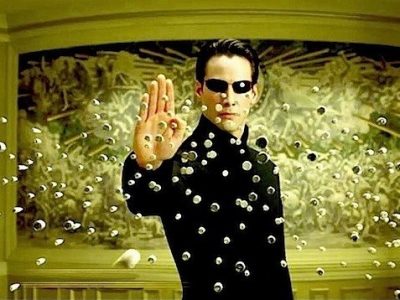End-of-day trading refers to analyzing the markets after the New York close. While it doesn’t need to be exactly at the close, the period between the NY close and the London open—typically the quiet Asian session—is ideal for reviewing daily charts and making clear, deliberate trading decisions.
So why avoid intra-day trading? Simply put, intra-day charts are filled with market noise and random price movements, making them more cluttered and harder to trade effectively. While experienced traders may find success with intra-day strategies, beginners, struggling traders, or those short on time are better off focusing on daily charts. End-of-day trading offers a more structured and less stressful approach, increasing your chances of long-term success.
Why End-of-Day Trading Works for Busy People
 End-of-day trading is ideal for those with full-time jobs or busy schedules. It allows you to participate in the markets without needing to monitor price movements throughout the day. Contrary to popular belief, you don’t need to watch charts all day to be a successful trader.
End-of-day trading is ideal for those with full-time jobs or busy schedules. It allows you to participate in the markets without needing to monitor price movements throughout the day. Contrary to popular belief, you don’t need to watch charts all day to be a successful trader.
In fact, staying away from the screen can actually work to your advantage. The less time you spend watching every tick, the less likely you are to over-trade—a common pitfall. This built-in distance acts as a natural filter for impulsive decisions, and over time, it can help boost your profitability. Studies show that low-frequency traders tend to outperform high-frequency traders in the long run.
As an end-of-day trader, you don’t have to change your lifestyle. Instead of spending 30 minutes scrolling your phone or watching TV in the evening, you can use that time to review the daily charts, follow your trading plan, and identify high-quality setups. It might sound overly simple, but once you master a solid strategy and stick to a clear plan, you’ll find that trading doesn’t have to consume your entire day.
Less Clutter on Your Charts—and in Your Mind
 Traders often overcomplicate the process, thinking complexity equals profitability. While it’s true that consistent success in the markets is challenging, the actual analysis doesn’t need to be. The real difficulty lies in managing emotions and sticking to your plan—not in identifying a trade. Entering a position should be straightforward: there’s either a valid signal or there isn’t.
Traders often overcomplicate the process, thinking complexity equals profitability. While it’s true that consistent success in the markets is challenging, the actual analysis doesn’t need to be. The real difficulty lies in managing emotions and sticking to your plan—not in identifying a trade. Entering a position should be straightforward: there’s either a valid signal or there isn’t.
Once you’ve mastered a strategy like price action trading, the next step is to build a solid trading plan around it. From there, your daily routine becomes simple: check the charts after the New York close, look for your setup, and decide whether to act. With discipline and routine, this process shouldn’t take more than 30 minutes a day. Simplicity is not just efficient—it’s powerful.
Get More Out of Your Time
As a daily chart end-of-day trader, you’re making smarter, more efficient use of your time. Daily signals tend to carry more weight and reliability compared to the noise-heavy setups found on intraday charts. This means the time you spend analyzing the markets after the New York close is not only shorter but also far more productive.
Rather than sitting at your screen all day chasing lower-quality intraday signals, you can quickly review the daily charts, identify any high-probability setups, and move on with your day. In short, you’re getting more value—more “bang for your buck”—by spending less time and focusing on higher-quality opportunities.
How to Trade End-of-Day in 30 Minutes or Less
One of the greatest advantages of end-of-day trading is its simplicity and efficiency. With a disciplined routine and the right mindset, you can manage your entire trading process in about 30 minutes a day. Here’s how to do it:
- Start with the Signal: Begin by scanning your chosen markets for clear, high-quality trade signals based on your trading plan. If you’ve truly mastered your strategy, this should take no more than 10–15 minutes. You’re looking for obvious price action setups on the daily chart timeframe. If nothing stands out after a few minutes, that’s your cue to walk away. The biggest mistake traders make is forcing trades—trying to “find something” when nothing is really there. Don’t fall into that trap.
- Match the Signal to a Key Level: Once you spot a potential setup, check whether it aligns with a significant support or resistance level. These levels should be drawn at the start of the week and updated each evening after the New York close. With experience, this step becomes quick and intuitive. The more aligned your signal is with a key level, the higher the probability of success.
- Assess Market Conditions: Context is critical. Is the market trending, consolidating, or ranging? If it’s trending, is it moving with momentum or just grinding slowly? Understanding the broader market environment will help you decide whether the signal makes sense or should be passed over. Your strategy should adapt to different conditions—don’t trade a breakout setup in a choppy range or a reversal signal in a strong trend.
- Create a Daily Market Commentary: Take 5–10 minutes to write a short commentary for each of your favorite markets. Summarize what you see using your trading plan as a guide. This habit builds consistency and objectivity and helps you stay in tune with the markets. After reviewing your notes, see if any trades really stand out. This reflection process sharpens your judgment and develops your discretionary trading skills.
- When You’re Done, Walk Away: After completing your routine, there are only two possible outcomes: you have a valid trade setup—or you don’t. Either way, you’re finished for the day. If there’s a trade, enter your parameters and walk away. If there isn’t, close your charts and do something else. The key is to avoid watching trades or staring at charts—this only invites emotional decisions like cutting winners short or interfering unnecessarily.
- Let Go and Trust the Process: Stepping away shows humility and discipline. You’re acknowledging that you can’t control the market—and that’s a good thing. Once you’ve accepted your risk, assume the trade may lose. That way, a winning trade is a pleasant surprise, and a loss isn’t a disappointment—it’s simply part of the process. The more emotionally detached you are, the more consistent your results will be over time.
Wrapping Up: The End-of-Day Trading Philosophy
End-of-day trading is more than just a method—it’s a mindset. It embraces the idea of stepping back, letting the market do its thing, and avoiding the constant urge to control or predict every move. This approach reflects a mature understanding of how trading really works: success doesn’t come from being glued to your screen, but from making clear, objective decisions and trusting your process.
By removing the pressure to be “right” all the time, end-of-day trading fosters patience, discipline, and emotional control—key traits of consistently profitable traders. Even as you gain experience and potentially explore shorter time frames, the core philosophy remains valuable: check the market, make a decision based on your edge, and then walk away. That simplicity is what makes it so powerful.


